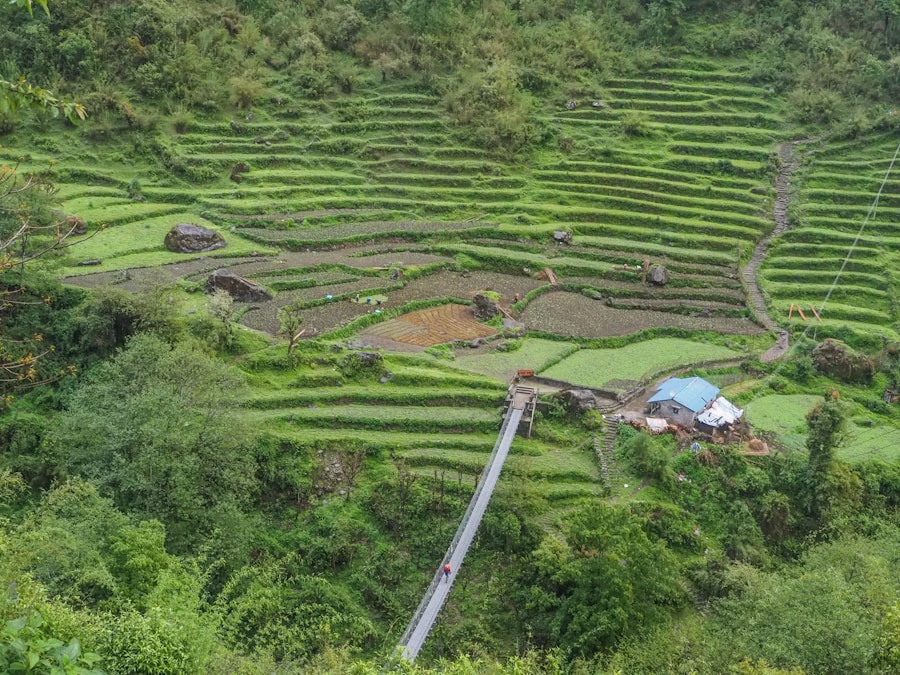Download links
How to install Preserving 30jili Banaue Rice Terraces APK?
1. Tap the downloaded Preserving 30jili Banaue Rice Terraces APK file.
2. Touch install.
3. Follow the steps on the screen.
Description
The Banaue Rice Terraces, often referred to as the “Eighth Wonder of the World,” are a remarkable feat of engineering and agriculture that have been cultivated for over 2,000 years by the Ifugao people in the Philippines. These terraces, carved into the mountainsides of the Cordillera region, not only represent an extraordinary agricultural system but also embody a deep cultural heritage that is integral to the identity of the Ifugao community. The preservation of these terraces is crucial not only for maintaining agricultural practices but also for safeguarding the cultural traditions and knowledge that have been passed down through generations.
The terraces are a living testament to the ingenuity of indigenous peoples and their ability to adapt to and thrive in challenging environments. Preserving the Banaue Rice Terraces is essential for several reasons. Firstly, they serve as a vital source of sustenance for local communities, providing rice, which is a staple food in the Philippines.
The terraces are not merely agricultural plots; they are part of a complex ecosystem that supports biodiversity and contributes to the overall health of the environment.
This influx of tourism can provide economic benefits to local communities, but it also necessitates careful management to ensure that the cultural integrity and ecological balance of the area are maintained.
Key Takeaways
- The Banaue Rice Terraces are an important cultural and historical heritage site that needs to be preserved for future generations.
- Threats to the preservation of the Banaue Rice Terraces include environmental degradation, urbanization, and lack of sustainable farming practices.
- Efforts to preserve the Banaue Rice Terraces include conservation projects, community involvement, and sustainable agriculture initiatives.
- The Banaue Rice Terraces hold significant cultural and historical value as a testament to the ingenuity and resilience of the Ifugao people.
- Sustainable tourism is crucial for the preservation of the Banaue Rice Terraces, as it can provide economic opportunities while minimizing negative impacts on the environment and local communities.
- The future of the Banaue Rice Terraces depends on the collective efforts of government, local communities, and tourists to prioritize conservation and sustainable development.
Threats to the Preservation of the Banaue Rice Terraces
Despite their historical and cultural significance, the Banaue Rice Terraces face numerous threats that jeopardize their preservation.
These climatic shifts can cause soil erosion, landslides, and damage to the intricate irrigation systems that are essential for rice cultivation.
As temperatures rise and rainfall becomes more erratic, the traditional farming practices that have sustained these terraces for centuries are increasingly at risk. In addition to climate change, urbanization poses a significant threat to the Banaue Rice Terraces. As more people migrate to urban areas in search of better opportunities, rural communities face depopulation, leading to a decline in traditional agricultural practices.
Young people often leave their ancestral lands for cities, resulting in abandoned terraces that fall into disrepair. This abandonment not only affects food production but also diminishes the cultural practices associated with rice farming. Furthermore, infrastructure development, such as roads and buildings, can encroach upon these historical sites, further threatening their integrity and leading to irreversible damage.
Efforts to Preserve the Banaue Rice Terraces

Recognizing the importance of preserving the Banaue Rice Terraces, various stakeholders have initiated efforts aimed at safeguarding this UNESCO World Heritage site. Local government units, non-governmental organizations (NGOs), and community groups have come together to implement sustainable agricultural practices that promote environmental stewardship while ensuring food security for local populations. These initiatives often include training programs for farmers on modern techniques that complement traditional methods, thereby enhancing productivity without compromising the ecological balance.
Moreover, there has been a concerted effort to raise awareness about the cultural significance of the terraces among younger generations. Educational programs in schools emphasize the importance of preserving indigenous knowledge and practices related to rice cultivation. Community-led initiatives encourage local youth to engage in farming activities and participate in cultural events that celebrate Ifugao heritage.
By fostering a sense of pride in their cultural identity and encouraging active participation in preservation efforts, these programs aim to ensure that traditional practices continue to thrive amidst modern challenges.
The Cultural and Historical Significance of the Banaue Rice Terraces
| Aspect | Details |
|---|---|
| Location | Ifugao Province, Philippines |
| Age | Over 2,000 years old |
| UNESCO World Heritage Site | Yes |
| Construction | Hand-built by ancestors of the indigenous people |
| Size | Approximately 10,360 square kilometers |
| Importance | Symbol of Filipino ingenuity and cultural heritage |
The Banaue Rice Terraces are not merely agricultural landscapes; they are deeply intertwined with the cultural identity and spiritual beliefs of the Ifugao people. The construction of these terraces is rooted in ancient traditions that reflect a profound understanding of sustainable land management and environmental harmony. The Ifugao have developed intricate rituals and ceremonies surrounding rice cultivation, which are integral to their cultural heritage.
These practices include rituals for planting and harvesting rice, as well as ceremonies that honor ancestral spirits believed to protect the land. Historically, the terraces also serve as a symbol of social organization within Ifugao society. The communal effort required to build and maintain these terraces fosters a sense of cooperation and solidarity among community members.
The terraces are often passed down through generations, creating a strong connection between families and their ancestral lands. This intergenerational bond reinforces cultural continuity and ensures that traditional knowledge is preserved. The significance of the Banaue Rice Terraces extends beyond their physical presence; they embody a way of life that has sustained the Ifugao people for millennia.
Sustainable Tourism and the Banaue Rice Terraces
Sustainable tourism presents both opportunities and challenges for the preservation of the Banaue Rice Terraces. On one hand, responsible tourism can provide much-needed economic support for local communities while promoting awareness about the importance of preserving this cultural heritage. Tourists who visit the terraces contribute to local economies by purchasing handicrafts, dining at local eateries, and participating in guided tours that educate them about Ifugao culture and agricultural practices.
This influx of visitors can incentivize preservation efforts as communities recognize the value of their heritage in attracting tourists. However, it is crucial that tourism development is managed sustainably to prevent negative impacts on both the environment and local culture. Over-tourism can lead to environmental degradation, including soil erosion and waste management issues, which threaten the very landscapes that attract visitors.
To mitigate these risks, stakeholders must implement regulations that limit visitor numbers during peak seasons and promote eco-friendly practices among tourists. Additionally, engaging local communities in tourism planning ensures that they have a voice in how their cultural heritage is presented and preserved.
The Future of the Banaue Rice Terraces

Climate-Smart Agriculture and Research
Integrating climate-smart agriculture techniques can improve crop yields while minimizing environmental impact. Research into drought-resistant rice varieties or alternative crops could provide farmers with viable options as they adapt to changing conditions.
Collaborative Conservation Efforts
Fostering partnerships between local communities, government agencies, NGOs, and academic institutions can facilitate knowledge exchange and resource sharing. Collaborative efforts can lead to more effective conservation strategies that address both environmental sustainability and cultural preservation.
Empowering Future Generations
By prioritizing education and community engagement, future generations can be empowered to take an active role in safeguarding their heritage while adapting to contemporary challenges. In conclusion, while the Banaue Rice Terraces face significant threats from climate change and urbanization, there is hope for their preservation through concerted efforts at various levels. By recognizing their cultural significance and implementing sustainable practices in agriculture and tourism, stakeholders can work together to ensure that this extraordinary landscape continues to thrive for generations to come.
FAQs
What are the Banaue Rice Terraces?
The Banaue Rice Terraces are ancient terraces carved into the mountains of Ifugao in the Philippines. They are often referred to as the “Eighth Wonder of the World” and are a UNESCO World Heritage Site.
How old are the Banaue Rice Terraces?
The Banaue Rice Terraces are estimated to be over 2,000 years old, making them one of the oldest and most remarkable examples of terrace farming in the world.
What is the significance of the Banaue Rice Terraces?
The Banaue Rice Terraces are not only a stunning example of ancient engineering and agricultural practices, but they also hold cultural and historical significance for the indigenous people of the Ifugao region.
How were the Banaue Rice Terraces constructed?
The terraces were painstakingly carved into the mountainside by hand, using only basic tools and the labor of the Ifugao people. The construction of the terraces is a testament to the ingenuity and hard work of the ancient Ifugao people.
Can visitors explore the Banaue Rice Terraces?
Yes, visitors are welcome to explore the Banaue Rice Terraces. There are hiking trails and viewpoints that offer breathtaking views of the terraces and the surrounding mountains. It is important to respect the local culture and environment while visiting the terraces.





